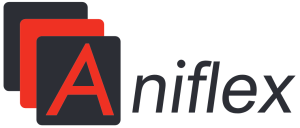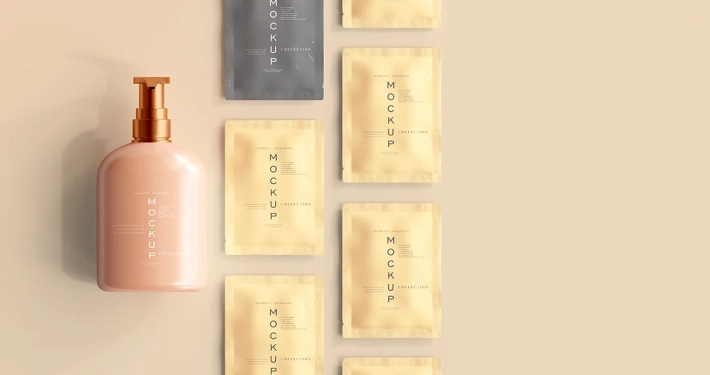Flexible packaging is the perfect solution for labelling irregularly shaped products. It has recently become increasingly popular with manufacturers who are keen to combine high quality with an attractive price. Read the article, find out what makes it stand out and in which sectors such packaging works best.
What are the characteristics of flexible packaging?
The flexible packaging range features extremely robust products and can be used for a variety of purposes, shapes and sizes. Its primary advantage is that it can be customised to meet the needs of the individual customer and the specifics of the chosen product. Packaging made of film enables effective product protection while taking into account the marketing function that packaging should fulfil. Due to the materials used in its manufacture, flexible packaging provides excellent protection against external factors (moisture, UV rays, pollution) and at the same time stands out due to its attractive design.
Modern flexible packaging is chosen by companies from a wide range of industries that are interested in a wide range of personalisation options for their products. The film can be digitally printed in any way and can also be used for enrichment. Gilding or silver stamping using cold-stamping methods produces attractive packaging that matches the character of the product and the visual identity of the brand. It looks great on shop shelves and attracts the eye, which has a positive impact on sales.
Key benefits of flexible packaging are:
- can be easily adjusted to individual products,
- high airtightness,
- high customisation potential – the combination of materials and colours produces special designs that stand out from the competition,
- compatibility with automatic production lines (high-speed packaging),
- lower production costs,
- space savings (on warehouse or shop shelves),
- reducing transport costs,
- can be disposed of after use.
When choose flexible packaging?
Appropriate selection of packaging is a major challenge for entrepreneurs who want their products to reach their customers intact and sell well. Flexible packaging is a solution used by companies in a wide range of industries. It is available both as soft film and as ready-made bags designed for specific products. It works especially well for less delicate products with non-standard shapes, sizes or textures. It is an excellent alternative for bulk raw materials, which are sold in many different weights (e.g. spices). It is also increasingly used for liquid products (including sauces).
Which industries are most likely to choose flexible packaging?
Cost-optimised yet durable flexible packaging is very often the packaging of choice for the following industries:
- food,
- cosmetics,
- pharmaceuticals,
Our flexible packaging range is mainly dedicated to the cosmetic and chemical sector. It is also worth mentioning that flexible packaging is also ideal as food packaging.
Do you need flexible packaging? Check out the Aniflex range!
We offer flexible packaging (https://aniflex.pl/oferta/opakowania-elastyczne) adjusted to the customer’s needs. We use digital and flexographic printing technology, so we are able to respond to individual needs while optimising costs. Feel free to contact us (https://aniflex.pl/kontakt) – we will advise you on how to select the ideal technology and enrichments for your specific order.
What are digital labels?
Digital labels are made using machines that transfer designs to the substrate directly from an electronic file. The data is sent to the device from suitably adapted graphic design software, enabling the user to respond in real time as the need arises to adjust the template.
Digital label printing – advantages
Digital printing technology has a number of advantages:
- cost-effective production of low-volume print runs,
- no need for photopolymer plate preparation for lower printing costs and shorter lead times,
- customised design,
- design can be changed at any stage,
- print runs can be combined, while maintaining one size and using the same material,
- proofs can be made directly from the machine,
- flexographic refinements available.
When should you choose digital label printing?
The digital printing technology is particularly suitable for low-volume printing. As there is no need to prepare the plate in advance, the solution makes business sense even for several dozen packages. This printing technology is especially widespread in small businesses that manually produce natural cosmetics or foods, such as honey, cheese, jam, preserves, cold-pressed oils, pickles organic vegetables, etc.
The digital printing technology allows labels with different designs to be produced in a single run, while maintaining one size and using the same material throughout. This gives the technology an extra edge in the production of self-adhesive labels for marketing purposes. Digital printing is also the technology of choice for projects with a large amount of variable data.
Manufacturers using flexographic labels in day-to-day business often take advantage of digital printing for small batches, for example for product launches or when the order size for labels is too low for mass production.
Digital labels – check the Aniflex offer
The Aniflex company has been working in the self-adhesive label sector for many years. This long-standing presence has allowed it to gain experience and the trust of producers in the market both in Poland and abroad. The machinery we have enables us to carry out high-volume projects using flexographic printing technology, as well as low-volume projects using digital printing technology (https://aniflex.pl/en/technology/digital-printing). Please do not hesitate to contact us

